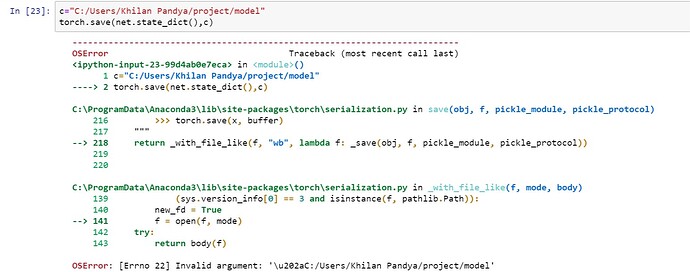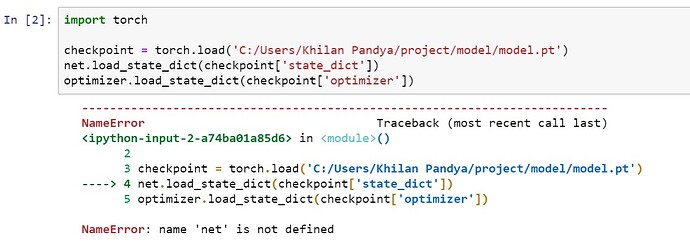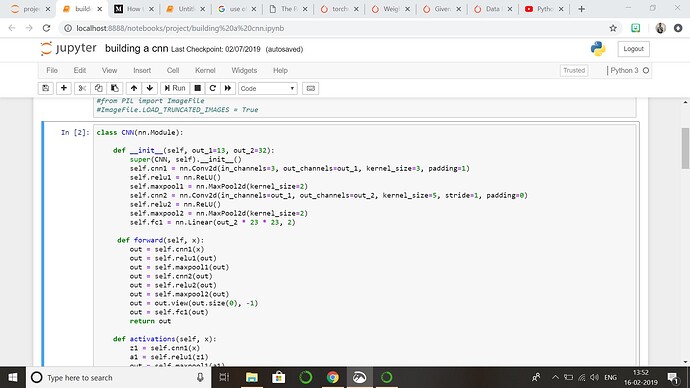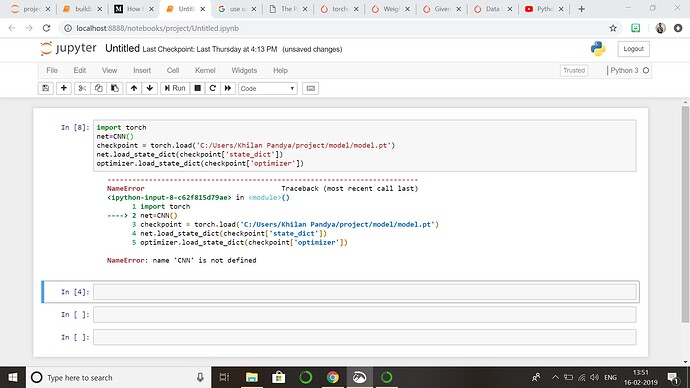I am new to pytorch and I am trying to build a cnn model using the following code. My issue is I dont know how to calculate input and output parameters. my images are of 100x 100 and grayscale. more my dataset is of 1690 images and I want to batch them in 13 images. there two output sets pos or neg. Can someone please explain me how to give values of command between two # lines
class Net(nn.Module):
def __init__(self):
super(Net, self).__init__()
############################
self.conv1 = nn.Conv2d(1, 6, 3)
self.conv2 = nn.Conv2d(6, 16, 3)
# an affine operation: y = Wx + b
self.fc1 = nn.Linear(16 * 5 * 5, 120)
self.fc2 = nn.Linear(120, 84)
self.fc3 = nn.Linear(84, 2)
########################################
def forward(self, x):
# Max pooling over a (2, 2) window
x = F.max_pool2d(F.relu(self.conv1(x)), (2, 2))
# If the size is a square you can only specify a single number
x = F.max_pool2d(F.relu(self.conv2(x)), 2)
x = x.view(-1, self.num_flat_features(x))
x = F.relu(self.fc1(x))
x = F.relu(self.fc2(x))
x = self.fc3(x)
return x
def num_flat_features(self, x):
size = x.size()[1:] # all dimensions except the batch dimension
num_features = 1
for s in size:
num_features *= s
return num_features
net = Net()
print(net)
n_epochs=3
loss_list=[]
accuracy_list=[]
N_test=len(validation_dataset)
def train_model(n_epochs):
for epoch in range(n_epochs):
for x, y in train_loader:
optimizer.zero_grad()
z = net(x)
loss = criterion(z, y)
loss.backward()
optimizer.step()
correct=0
#perform a prediction on the validation data
for x_test, y_test in validation_loader:
z = net(x_test)
_, yhat = torch.max(z.data, 1)
correct += (yhat == y_test).sum().item()
accuracy = correct / N_test
accuracy_list.append(accuracy)
loss_list.append(loss.data)
train_model(n_epochs)

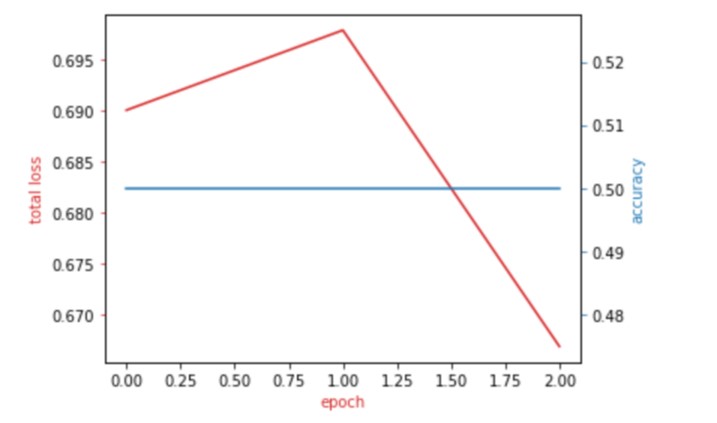
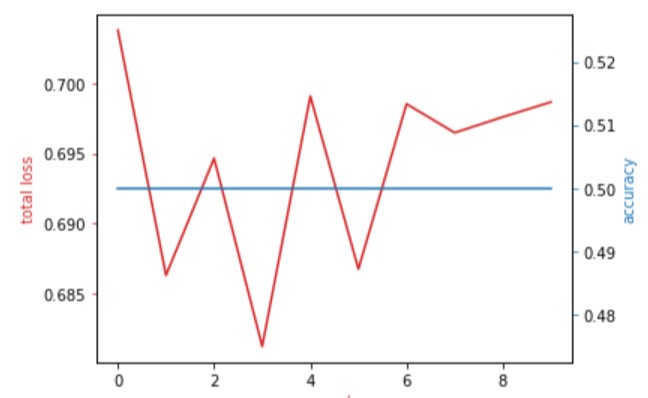

 .
.
